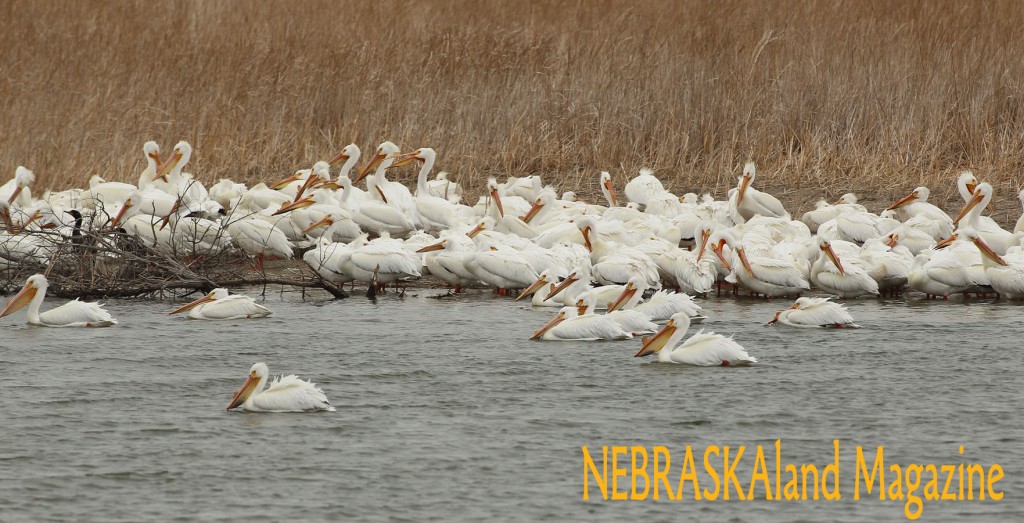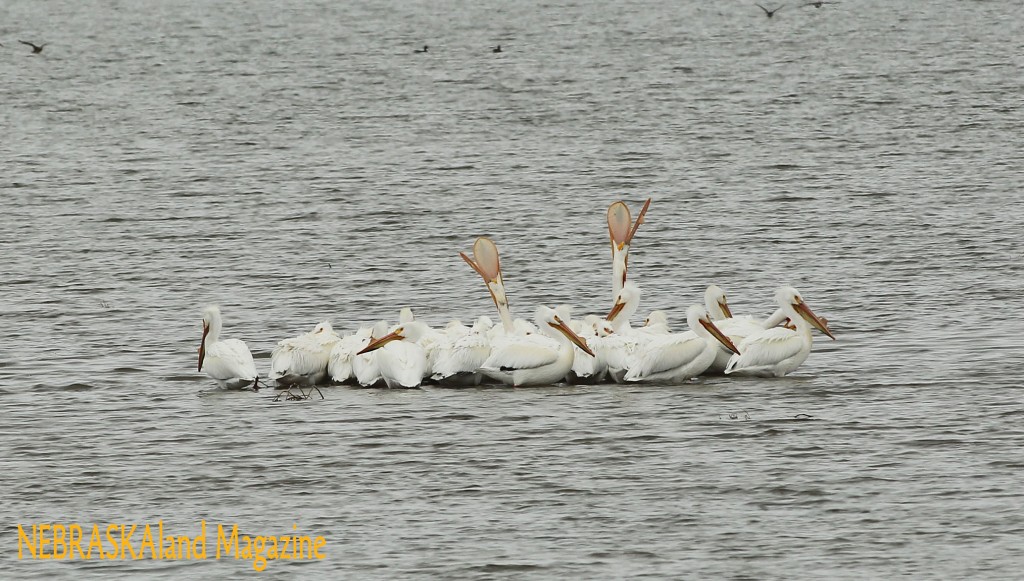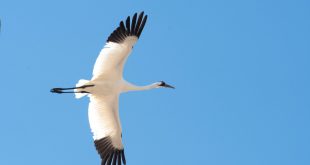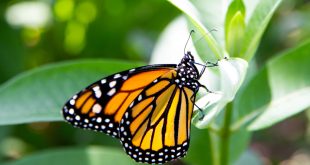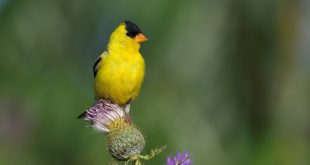American White Pelicans made their presence known – it was a pelican invasion if you will.
Pelicans are one of the world’s largest birds and the past week or two there were hundreds – maybe even thousands of them in west central Nebraska utilizing our rivers, interstate lakes and reservoirs.
Every spring migration I look forward to seeing the pelicans. I’m not sure what it is that intrigues me about the pelican, but I sure love to watch this giant fish eater.
This spring it seemed to me that there were many more pelicans than I can remember from previous years. I’m not sure if the pelicans knew it was still too cold up north, if some had ventured that way and came back to Nebraska, which attracted the masses or what the reason was – all I know is there were pelicans on almost every I80 lake, in the rivers and on the reservoirs.
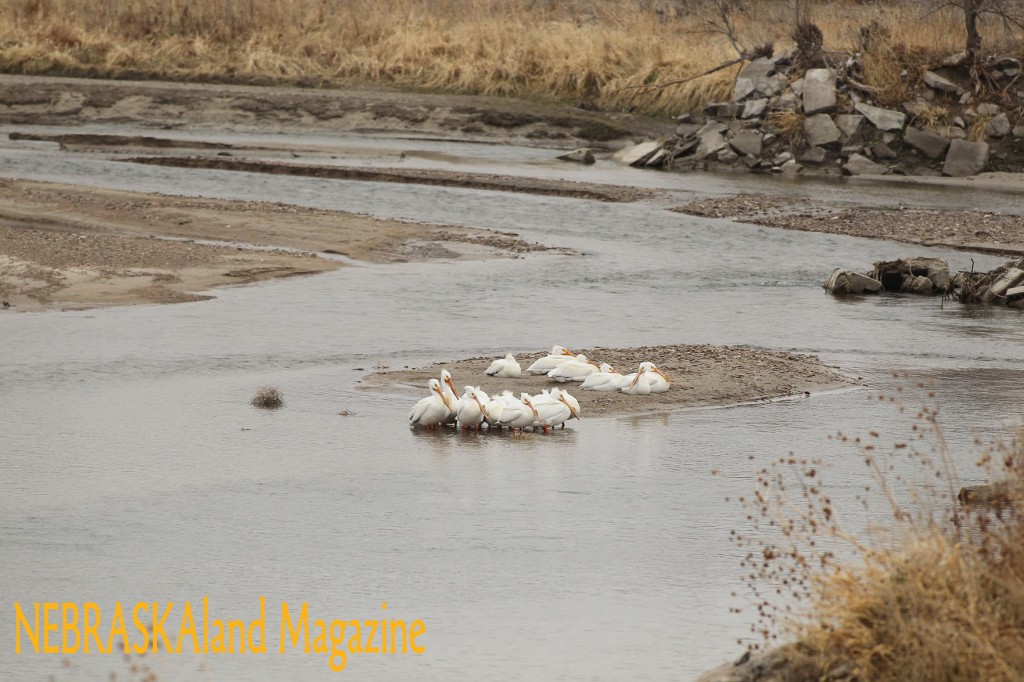
My first encounter this spring with these unique birds was at Lake Maloney, just south of North Platte. At the time, the water levels in the lake were low, leaving a safe and shallow area for the birds to roost. I was working my way around Kansas point at Lake Maloney when I came across a big whitish blob in the water. I couldn’t quite make out what it was until I got close. These birds were all huddled up for warmth as a blanket of snow covered the ground during the night. It was a cold morning and the pelicans didn’t seam very eager to move out of their warm group.
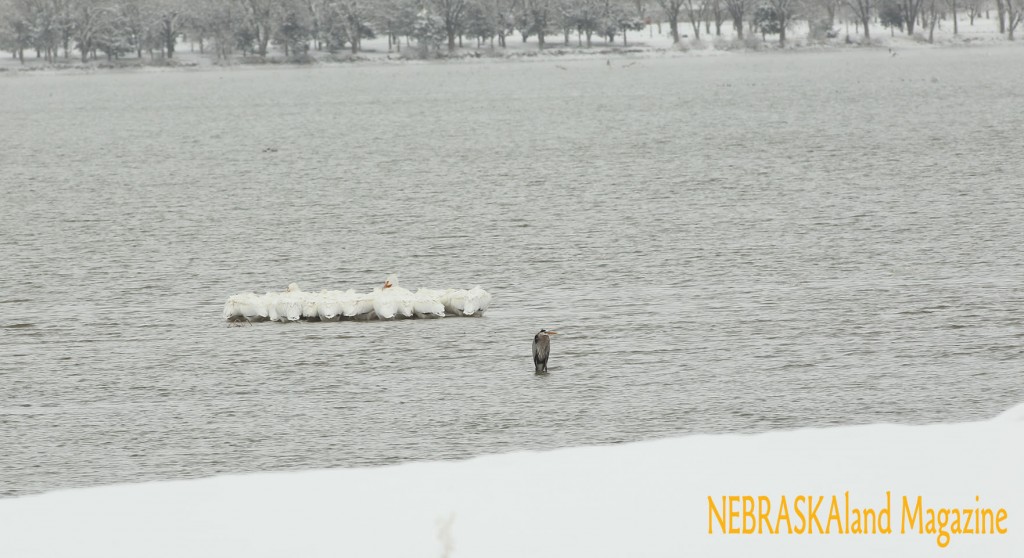
As I waited for some movement from the pelicans, I found other subjects to photograph. This heron wasn’t too enthused about getting around either.
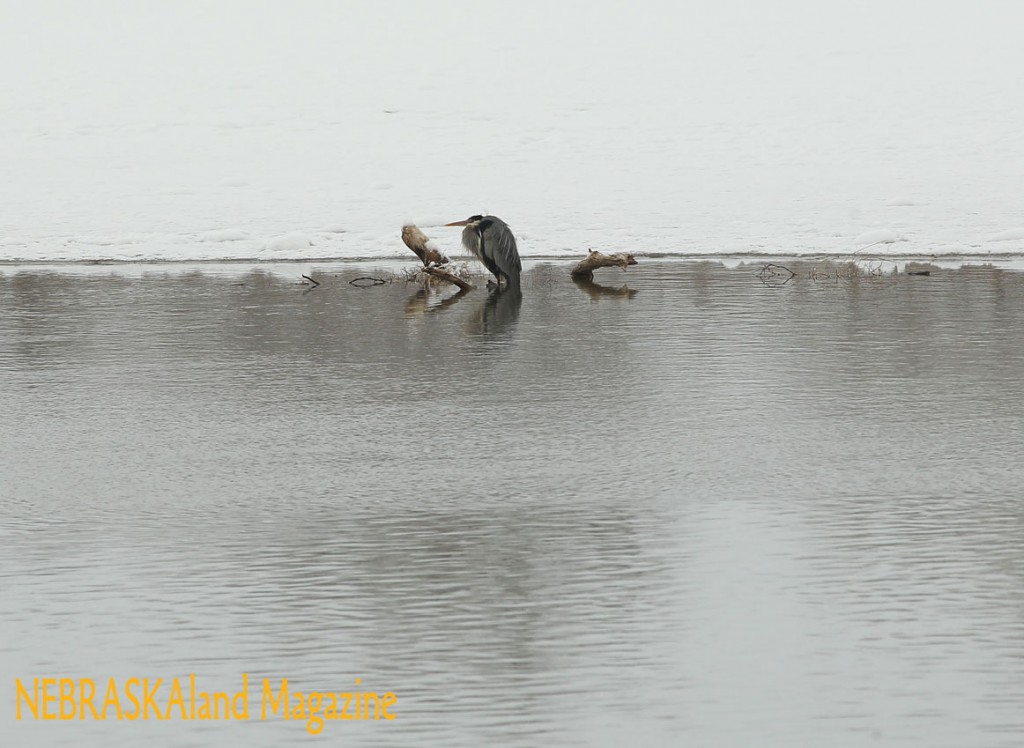
The American white pelican is the largest species of pelicans, weighing 11-18 pounds, with a wing span of nine-foot. As their name suggests, adult birds are primarily white with black wing tips. Probably the most distinguishing feature of pelicans is their long bills. Beneath the pelican’s long, flattened bill is a brightly colored yellow-orange pouch used for feeding.
The American white pelican may be confused with several other birds when in flight. The whooping crane and the snow goose are also white birds with black wing tips. Pelicans however, fly with their necks doubled back against their shoulders, while cranes and geese fly with their necks outstretched. The pelican’s long, yellow bill and bright orange feet also distinguish it from other birds.
Like swans and geese, pelicans often fly in evenly spaced lines or V formations. Although quite clumsy on land, they are surprisingly graceful in flight. Pelicans are often observed soaring, taking advantage of warm air currents to rise to great heights.
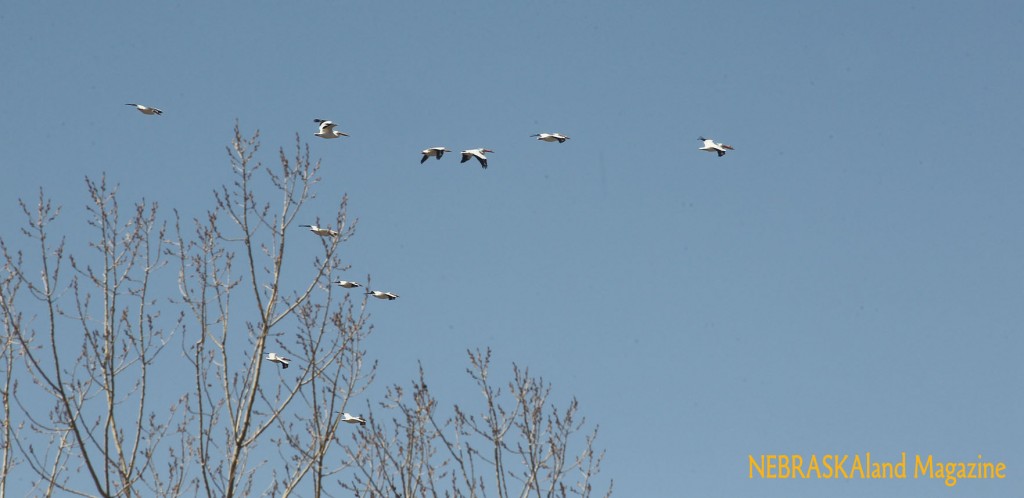
Their main food source consists of fish like perch, small northern pike, chubs, catfish and bass. Salamanders, frogs, and a variety of aquatic invertebrates are also utilized when they are abundant. An adult pelican can consume more than four pounds of food each day.
Unlike the Brown Pelican that dives for food, white pelicans fish in shallow waters and in groups. White pelicans dip their bills in the water, scooping up their meal, then quickly straining excess water from their pouches and finally tilting their heads back to swallow. If food is not readily available in the shallow water, a group of birds will form a line or semicircle and herd their prey. As this line floats forward the birds swing their bills back and forth in the water, scooping up available prey into their enormous pouches. This foraging action clouds the water with debris making it difficult for fish and other prey to see the pelicans. The pouch can hold 3 gallons of water.
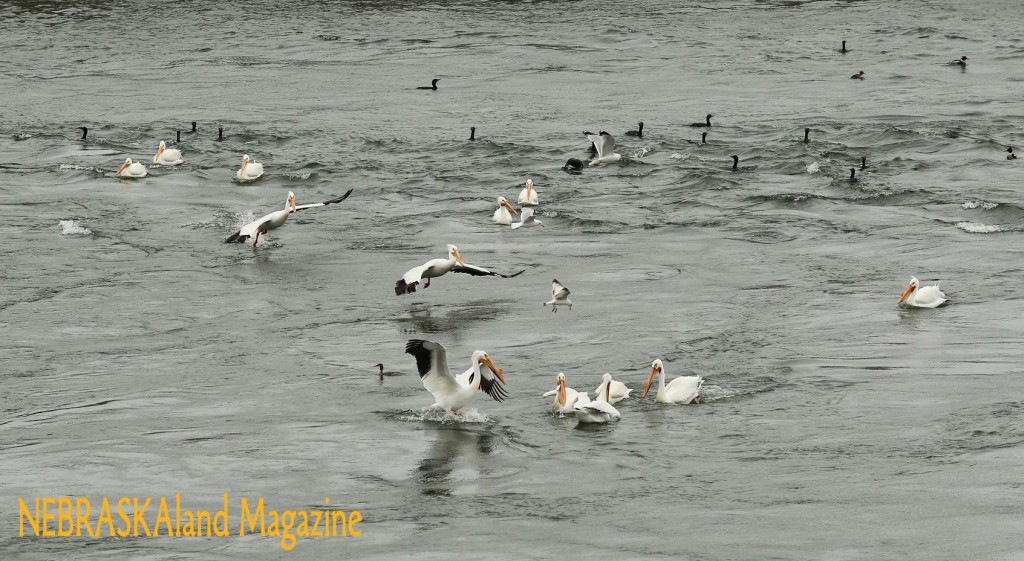
Pelicans are often seen feeding in the same area as cormorants. When cormorants dive, they may flush small fish toward the surface to become easy targets for waiting pelicans. A group of pelicans may even rob a cormorant of fish it has just brought up from deep water.
Gulls are usually also present where pelicans and cormorants are feeding. These birds are all in competition for food – if you have ever watched them hunt for a meal, you will see in person some of the battles. The pelicans watch the gulls, when the gulls start to dive toward the water to catch fish, the pelicans swarm in to steal the meal.
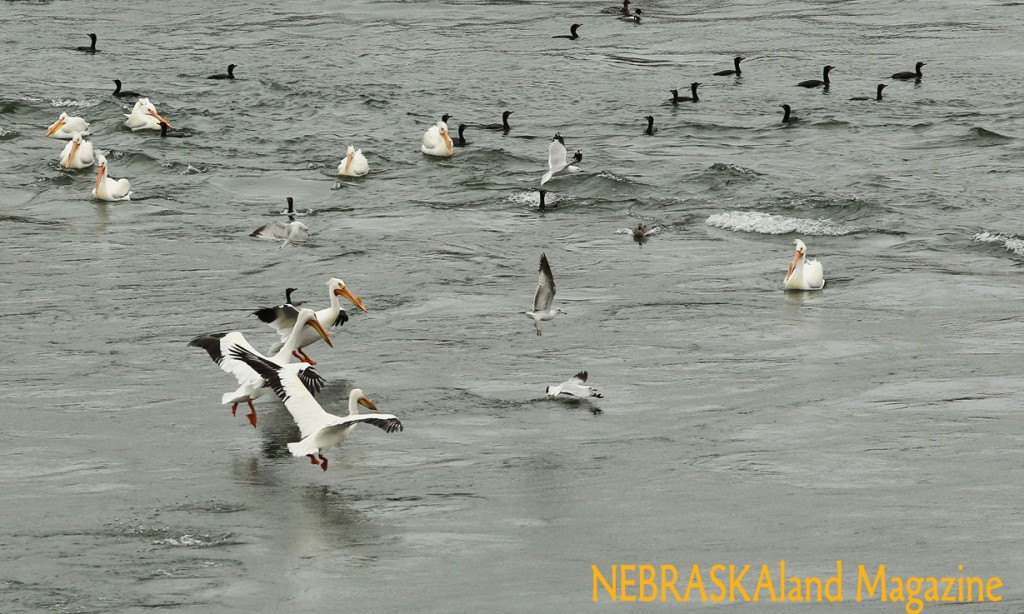
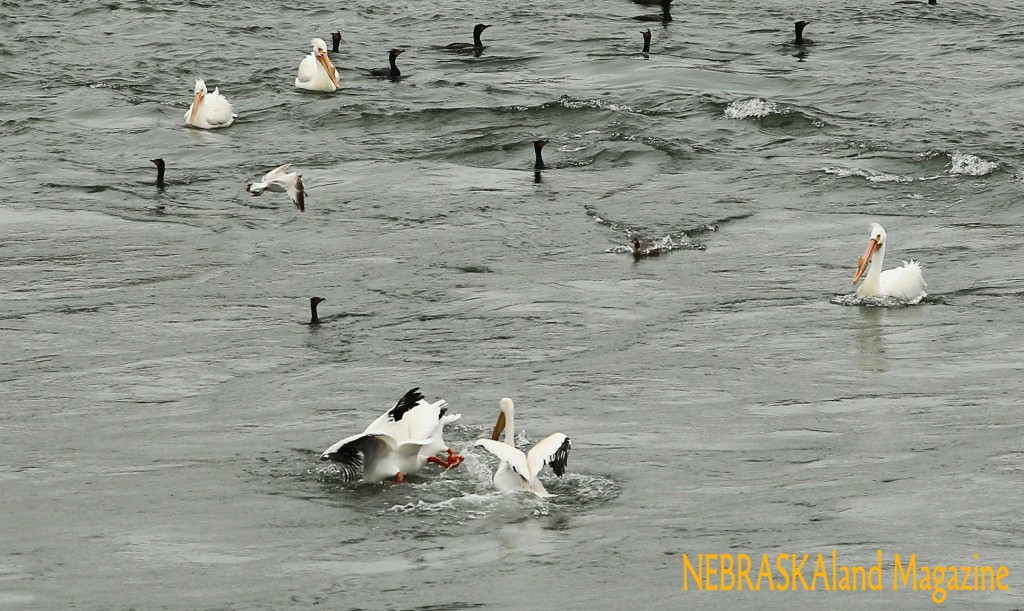
White pelicans can live to 20-years or more in the wild; they do not breed until they are 3 years old. Breeding adults have a pale yellow crest on their heads, their bill and pouch change color from pale yellow to bright orange and both males and females grow a fibrous plate or knob on the upper bill that lasts from late winter until after the female lays her eggs. Both sexes prominently display their bills during courtship rituals that include bowing, strutting, pointing their bills skyward and short courtship flights. Once the pair bond is formed, a small nesting area within a colony is chosen and defended. Little actual nest building is done. A nest may simply be a mound of dirt, pebbles, or sticks surrounding a shallow depression where the eggs are laid.
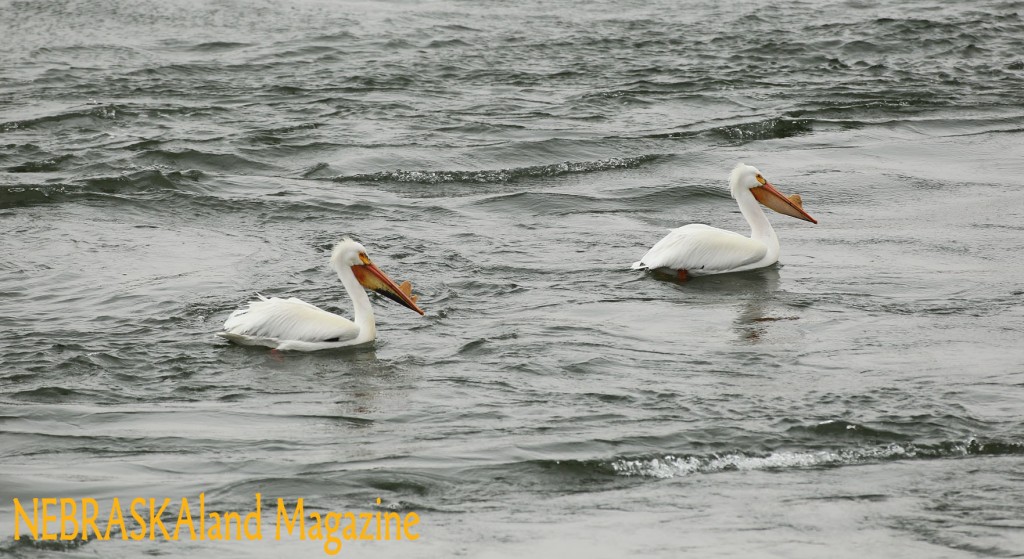
White Pelicans nest in colonies of several hundred pairs in remote islands and freshwater lakes in the Dakotas, Minnesota, Canada, and northern California. They winter along the Gulf Coast, California and Mexico.
Warm weather this week has moved most of the pelicans north; that is one thing about taking photos – you have to get out when the getting is good or you miss out!
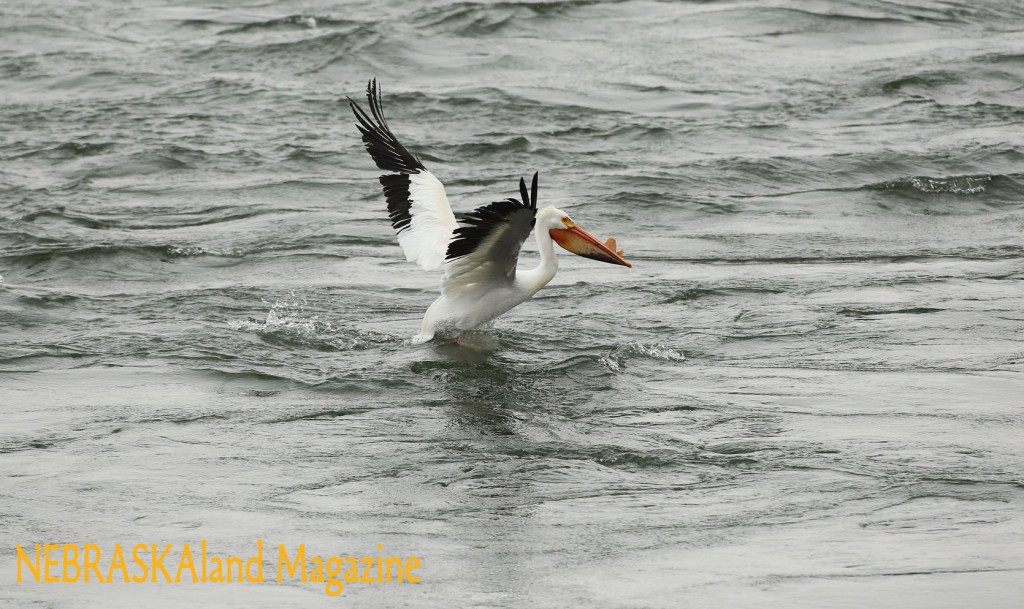
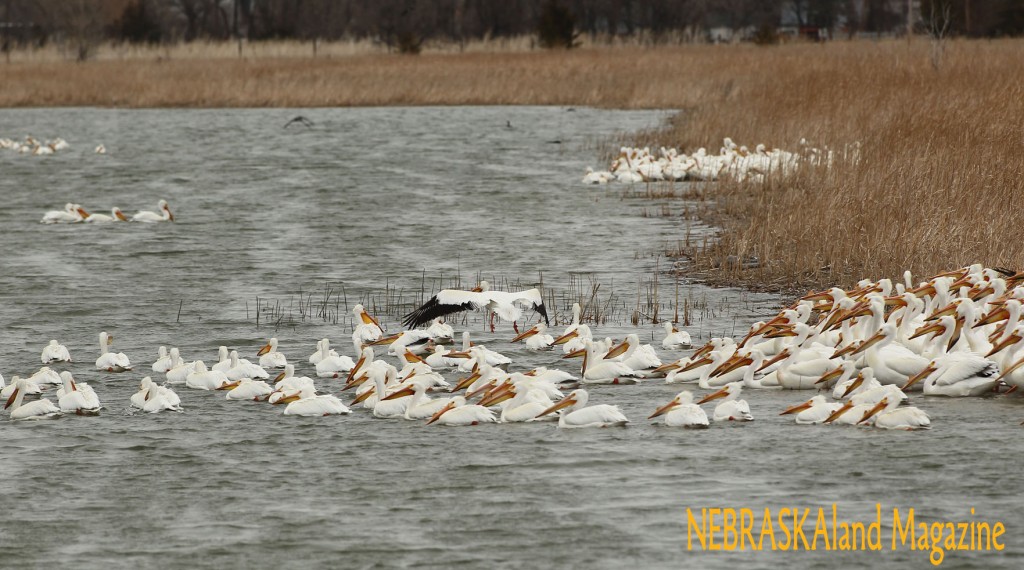
Julie Geiser out of North Platte, is a public information officer for the Nebraska Game and Parks Commission and regional editor for NEBRASKAland magazine. She can be reached at julie.geiser@nebraska.gov or 308-535-8025.
 Nebraskaland Magazine
Nebraskaland Magazine
